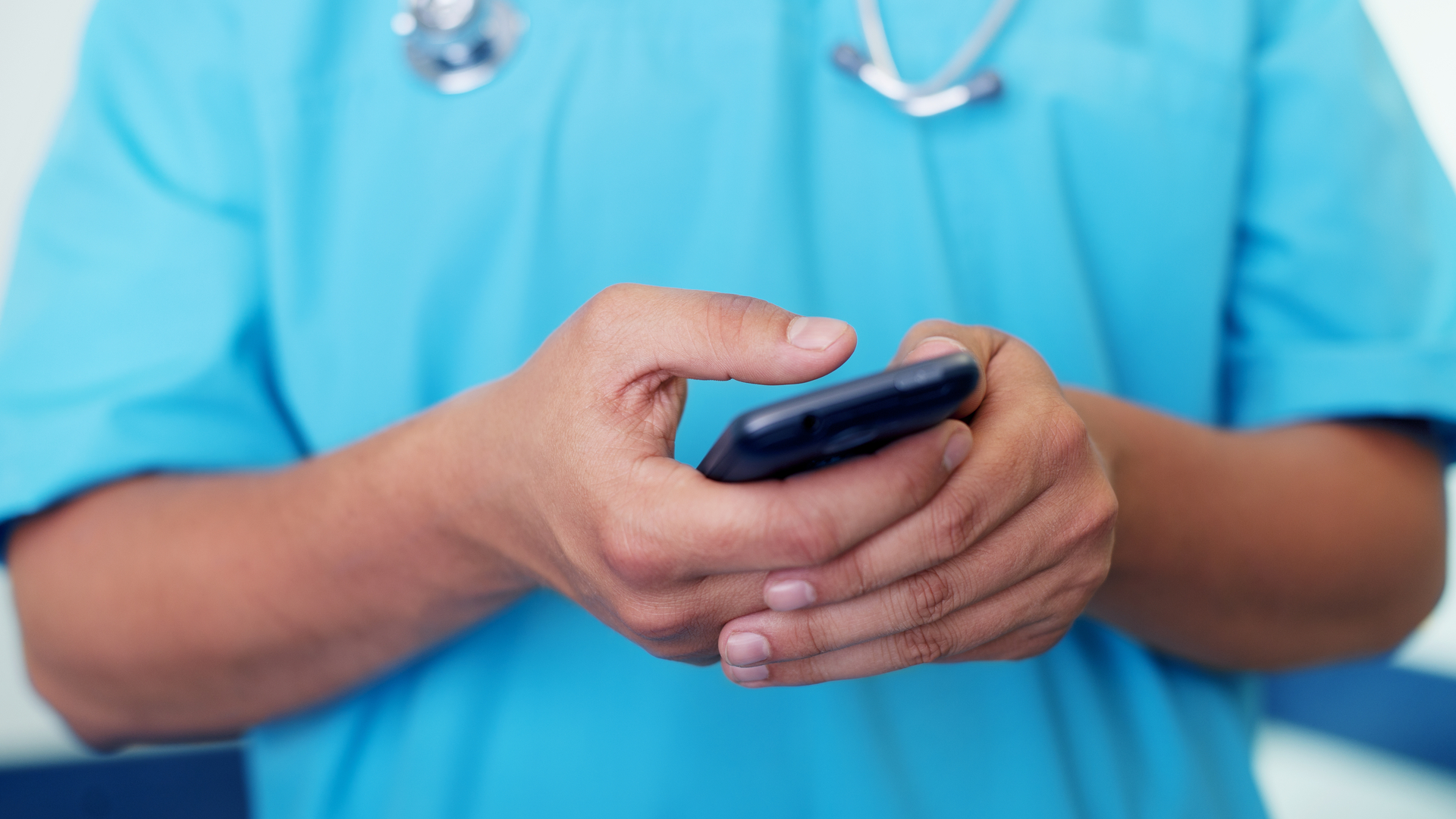How a paperless approach cut wasted staff hours at Bradford Teaching Hospitals Trust
Through DrDoctor’s digital portal for patient appointments and advice, the Rheumatology team at Bradford Teaching Hospitals NHS Foundation Trust has dramatically cut

Bradford Teaching Hospitals NHS Foundation Trust (BTHFT) serves a population of around 550,000 people in West Yorkshire. It employs over 6,400 people across six sites, including Bradford Royal Infirmary and St Luke's Hospital.
Healthcare workers, in particular those in the Rheumatology Team, were often taking non-essential nursing query calls. With each call averaging nine minutes and 34% deemed “inappropriate,” this took time away from core duties.
The department was also facing patient complaints over the lengthy, paper-based process for scheduling patient appointments and requirement to call the Trust for changes and cancellations. A digital patient management platform was therefore proposed, which could redirect patient advice queries and digitize appointment letters and management for an improved patient digital experience.
ITPro spoke to Andrew Mullan, service improvement lead at BTHFT to learn more about what his he and his team looked for in the new system.
“In Bradford, each hospital has 10 to 12 different computer systems and they all will be sending letters,” says Mullan. “It needed to be able to take everything that we’ve got and work with the accessible information standard as well.”
NHS contracts typically run for five years. With the current contract coming to an end, this presented the BTHFT with the opportunity to digitally transform their appointment management system, thereby lessening demand on the primary care team.
A stable approach to dropping legacy tech
BTHFT reviewed ten prospective tenders, with a focus on those able to offer a usable and simple solution. Mullan’s team opted for DrDoctor, a patient engagement platform that has an established relationship with the NHS.
Sign up today and you will receive a free copy of our Future Focus 2025 report - the leading guidance on AI, cybersecurity and other IT challenges as per 700+ senior executives
With multiple systems generating letters, any digital transformation also needed to be able to sync with the Trust’s existing networks. Although hospitals can be incredibly innovative and the NHS is trialing exciting tech, the IT systems running operations at a given site may be inefficient or based on legacy tech.
Functionality and stability are therefore the most important factors when it comes to technological onboarding in a healthcare environment, which DrDoctor was able to deliver having already having been accredited by the NHS for its services.
Given the sensitive nature of patient information, all tenders had to meet data protection requirements and provide evidence of appropriate accreditation. Data protection impact assessments (DPIAs) were required and tenders were risk assessed regarding how information is shared and processed.
The benefits of an all-digital approach
The digital transformation took three months, during which Mullan’s team worked with DrDoctor to augment existing systems rather than put in an altogether new solution. “The good thing for us is the workflow didn't change,” says Mullan. “We didn't have to tell all these different secretaries they’ve got to do something different – they don’t even need to know about it”.
While internal adoption was smooth, Mullan tells ITPro improved communication around the deployment of the new system could have improved the experience for patients. “We did okay with existing patients because it was on the back of the letters in advance, but new patients wouldn't know,” says Mullan.
Despite this, the project has been a clear success. Following the rollout, response times to patient queries were reduced from between two to three weeks to just one and a half to two weeks, while 44% of patients had questions resolved directly through the digital platform.
After eight months, the equivalent of 2.5 days of nursing time was saved due to answering fewer calls.
RELATED WHITEPAPER

Through the new paperless appointments system, appointment information is now sent to patients via SMS in the form of a linked digital. This has also been a success, meeting the requests of patients and allowing them to easily change their appointment without having to spend their time and the time of staff altering information over the phone.
Parents and carers of patients can also add their mobile number and email address to the system, so they are automatically notified of patient appointments.
Mullan says that the new appointments platform has also been a big budgeting win: “With Royal Mail increasing their postage every year, which has rocketed since COVID, we'd be spending over £1,000,000 ($1.24 million) per year just on postage if we hadn't gone digital,” says Mullan.
A minor issue they encountered was that the appointment reminders sent by text were from a mobile number. While this meant that patients could reply to the text, it did mean there was a risk some patients could think the message was a phishing scam. “To alert that this is a trusted number, we put the number on the back page of all of our letter and worked with some of those ‘who called me’ websites too,” explains Mullan.
The Trust is mindful that digital tools are not for everyone. If any patients do not respond to the initial text or email, a letter is automatically sent after three days. Letters could also still be sent to patients who do not have a mobile number or email.
The transformation focused on digital letters with text reminders, but the ease of installation meant they were willing to try new things. BTHFT’s new digital portal has potential for further expansion in the future and Mullan’s team have branched out into using DrDoctor for collecting patient assessments.
This is just the first stage in the roadmap for BTHFT. Going forward, it will work to expand the digital transformation into other departments and deploy further improved functionality.
-
 Trump's AI executive order could leave US in a 'regulatory vacuum'
Trump's AI executive order could leave US in a 'regulatory vacuum'News Citing a "patchwork of 50 different regulatory regimes" and "ideological bias", President Trump wants rules to be set at a federal level
-
 TPUs: Google's home advantage
TPUs: Google's home advantageITPro Podcast How does TPU v7 stack up against Nvidia's latest chips – and can Google scale AI using only its own supply?
-
 NHS leaders are keen to adopt new digital tools, but IT can't solve problems on its own
NHS leaders are keen to adopt new digital tools, but IT can't solve problems on its ownA survey of healthcare decision-makers finds they believe IoT devices and electronic health recording could help them reach more patients quicker
-
 Healthcare’s next chapter
Healthcare’s next chapterwhitepaper Revolutionizing how you care with EPR experts you can trust
-
 How digital experience management helped an NHS trust improve productivity
How digital experience management helped an NHS trust improve productivityCase study Princess Alexandra Hospital NHS Trust used digital experience management to cut device failure and restore time to clinicians
-
 Will the NHS Federated Data Platform transform UK healthcare?
Will the NHS Federated Data Platform transform UK healthcare?In-depth Plans to create a data platform in partnership with the private sector could revolutionize NHS treatment, but concerns over data privacy and security are festering
-
 NHS IT issues costing doctors more than 13 million hours annually
NHS IT issues costing doctors more than 13 million hours annuallyNews Doctors warn that ageing IT infrastructure is impacting patient care and clinical outcomes
-
 Automation is helping the NHS clear its patient backlog, but not as quickly as expected
Automation is helping the NHS clear its patient backlog, but not as quickly as expectedAnalysis The healthcare service's big bet on robotic process automation is making 'impactful' but slow progress
-
 DHSC sets out ambitious targets for NHS App by 2023, beyond
DHSC sets out ambitious targets for NHS App by 2023, beyondNews Ongoing NHS digitisation efforts will form backbone of the new system
-
 Gov 'forced into major U-turn' on NHS deal with Palantir, privacy group claims
Gov 'forced into major U-turn' on NHS deal with Palantir, privacy group claimsNews Open Democracy claims victory despite dropping its lawsuit